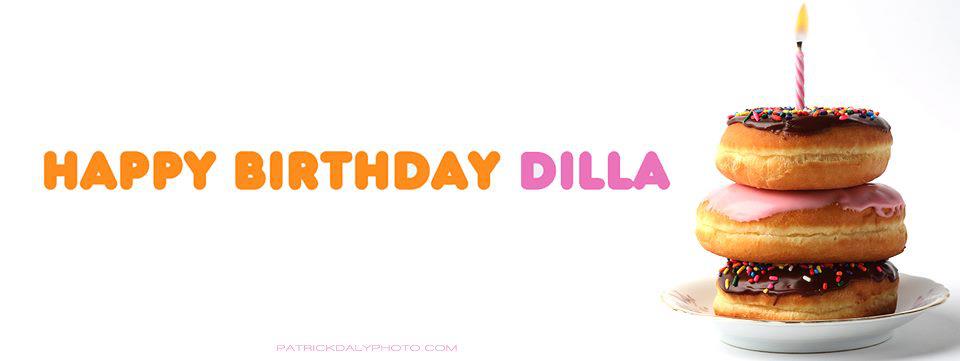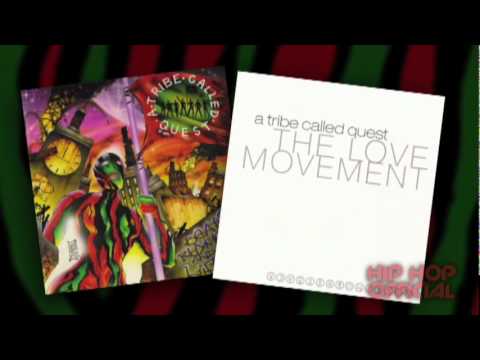Fortsätt läsa ”Nattens Bilder : Happy birthday Dilla! REST IN BEATS.”
The Evolution of James Yancey
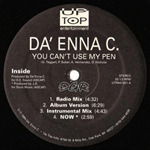 Da’ Enna C.: “Now” (1994)One of the earliest commercially released beats attributed to Dilla, back when he was credited as “J.D.” (changed to Jay Dee shortly afterwards). Most of the early stuff that heads outside of Detroit heard was already pretty clean and polished-sounding, but this early, rawer incarnation of his soul jazz-inflected style shows a different sort of edge. It has a similar set of ingredients as A-Plus’ beat for Souls of Mischief’s West Coast underground anthem “‘93 ‘til Infinity”— mellow Rhodes paired with prominent, busy snares and a deep-set bassline— but it’s still recognizably his once you know where he’d take those components in the future.
Da’ Enna C.: “Now” (1994)One of the earliest commercially released beats attributed to Dilla, back when he was credited as “J.D.” (changed to Jay Dee shortly afterwards). Most of the early stuff that heads outside of Detroit heard was already pretty clean and polished-sounding, but this early, rawer incarnation of his soul jazz-inflected style shows a different sort of edge. It has a similar set of ingredients as A-Plus’ beat for Souls of Mischief’s West Coast underground anthem “‘93 ‘til Infinity”— mellow Rhodes paired with prominent, busy snares and a deep-set bassline— but it’s still recognizably his once you know where he’d take those components in the future.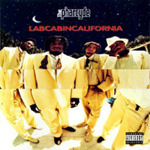 The Pharcyde: “Drop” (1995)The future came quickly. After being entrusted with co-production duties on the Pharcyde’s long-awaited sophomore album Labcabincalifornia, Jay Dee took advantage of the alt-rap group’s idiosyncratic reputation to stretch out and refine his approach. This is where he started honing down his boom-bap into more of a throb-click, and you can hear in the way he focuses most of the low-end frequencies on the offbeat bassline and keeps the drums— a subtle kick excepted— a bit further towards the treble end. The backwards organ loop that inspired Spike Jonze’s memorable moving-forward-in-reverse video is an eccentric touch that, like many of Jay Dee’s odder production choices, plays off a temporary disorientation and becomes catchy in short order.
The Pharcyde: “Drop” (1995)The future came quickly. After being entrusted with co-production duties on the Pharcyde’s long-awaited sophomore album Labcabincalifornia, Jay Dee took advantage of the alt-rap group’s idiosyncratic reputation to stretch out and refine his approach. This is where he started honing down his boom-bap into more of a throb-click, and you can hear in the way he focuses most of the low-end frequencies on the offbeat bassline and keeps the drums— a subtle kick excepted— a bit further towards the treble end. The backwards organ loop that inspired Spike Jonze’s memorable moving-forward-in-reverse video is an eccentric touch that, like many of Jay Dee’s odder production choices, plays off a temporary disorientation and becomes catchy in short order. Slum Village: “I Don’t Know” (2000)This re-recording of an early Slum Village demo wasn’t released until four years after Jay Dee first put its beat together. But this is a good indicator of where he was at when it came to sample-based production back in the mid 1990s, especially how he could use his technique to mess with narrative like his Donuts subliminals would 10 years later.
Slum Village: “I Don’t Know” (2000)This re-recording of an early Slum Village demo wasn’t released until four years after Jay Dee first put its beat together. But this is a good indicator of where he was at when it came to sample-based production back in the mid 1990s, especially how he could use his technique to mess with narrative like his Donuts subliminals would 10 years later.
The great joke here is that the old hip-hop standby of the James Brown sample is not only manifested in vocal interjections— primarily from “Sex Machine”, “Make It Funky”, and “It’s My Thing”— but actually sewn into the lyrics, so that when Jay Dee actually gets on the mic he literally lets his own production intercut into his lines (“You could ask my man T ‘3!’/ I ain’t the ‘1!’ to be played…”). Funnier still is when T3 makes a play for a girl: “I’m’a get with you so we can —” and a vigorous, euphemistic “uh!” from the Godfather finishes the sentence.
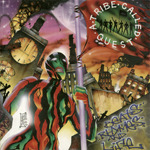 A Tribe Called Quest: “Get a Hold” (1996)Q-Tip was the man who recommended Jay Dee to the Pharcyde in the first place, so it was only a matter of time until Yancey became part of Tribe’s production team. The Ummah’s approach was criticized at the time, and still gets unfavorable comparisons to the more immediate sonic pleasures of The Low End Theory and Midnight Marauders— detractors claimed it was excessively laidback, too glossy, not enough bump to it. But what the Ummah era sound lost in upfront “Scenario”-caliber impact it gained in deep, rich intricacy.
A Tribe Called Quest: “Get a Hold” (1996)Q-Tip was the man who recommended Jay Dee to the Pharcyde in the first place, so it was only a matter of time until Yancey became part of Tribe’s production team. The Ummah’s approach was criticized at the time, and still gets unfavorable comparisons to the more immediate sonic pleasures of The Low End Theory and Midnight Marauders— detractors claimed it was excessively laidback, too glossy, not enough bump to it. But what the Ummah era sound lost in upfront “Scenario”-caliber impact it gained in deep, rich intricacy.
Here, gelatinous bass notes bleed into each other and almost subliminally double up the melody of a chopped-up, downpitched hook (“drifting back/just suddenly”) carefully reassembled from the Cyrkle’s folk-rock song “The Visit (She Was Here)”. According to an eyewitness account from Detroit fixture and associate DJ House Shoes, this beat only took 12 minutes for Jay Dee to make— an unbelievably short span that accounted for a stretch of frustrated attempts to get the drums perfect. (He succeeded.)
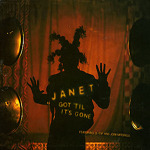 Janet Jackson: “Got ‘Til It’s Gone (Ummah Jay Dee’s Revenge Mix)” (1997)One of the more contentious moments in Dilla’s career is an issue of attribution. Yancey claimed co-authorship of this song alongside Tip and Ali Shaheed Muhammad, and the original version of “Got ‘Til It’s Gone” bears all the hallmarks of the Ummah style: neo-soul electric pianos, subdued kicks paired with prominent snares, and bass that burbles so thickly that it flows instead of pops. But the official production credits name Jackson, Jimmy Jam, and Terry Lewis alone.
Janet Jackson: “Got ‘Til It’s Gone (Ummah Jay Dee’s Revenge Mix)” (1997)One of the more contentious moments in Dilla’s career is an issue of attribution. Yancey claimed co-authorship of this song alongside Tip and Ali Shaheed Muhammad, and the original version of “Got ‘Til It’s Gone” bears all the hallmarks of the Ummah style: neo-soul electric pianos, subdued kicks paired with prominent snares, and bass that burbles so thickly that it flows instead of pops. But the official production credits name Jackson, Jimmy Jam, and Terry Lewis alone.
The revenge in question, then, is simply a matter of cranking up those aforementioned trademarks until the source is unmistakable. The bassline congeals, the keyboards are run through a rippling wah-wah, the titular Joni Mitchell loop fades in and out of focus— it’s the difference between a neon sign and a lava lamp.
 The Roots: “Dynamite!” (1999)Like Q-Tip, ?uestlove was one of many hip-hop auteurs who got hipped to Jay Dee through the first self-released cassette tape that his group Slum Village put out in 1996. ?uestlove was struck in particular by Jay Dee’s organic-seeming drum programming, rhythmically quantized while still possessing a deceptively loose and loping feel, which the Roots drummer described to Rolling Stone as “musically drunk and sober at the same time.”
The Roots: “Dynamite!” (1999)Like Q-Tip, ?uestlove was one of many hip-hop auteurs who got hipped to Jay Dee through the first self-released cassette tape that his group Slum Village put out in 1996. ?uestlove was struck in particular by Jay Dee’s organic-seeming drum programming, rhythmically quantized while still possessing a deceptively loose and loping feel, which the Roots drummer described to Rolling Stone as “musically drunk and sober at the same time.”
Jay was eventually incorporated into the Soulquarians with ?uestlove, D’Angelo and James Poyser, and this cut from Things Fall Apart is Jay’s first audition as part of the collective, integrating neatly into the Roots’ live-band dynamics with a choppy stride that lets bass, drums and guitar each give their own angle on the same bouncing
 Q-Tip: “Let’s Ride” (1999)If traditionalist heads were startled by Beats, Rhymes & Life and The Love Movement, Q-Tip’s solo debut Amplified was enough to alienate them almost completely. But while the album caught some flack for being overtly “commercial”— charges pinned mostly on early singles “Vivrant Thing” and “Breathe and Stop”— it was also a good venue for Jay to continue expanding his approach with a musical partner who was open to reinvention.
Q-Tip: “Let’s Ride” (1999)If traditionalist heads were startled by Beats, Rhymes & Life and The Love Movement, Q-Tip’s solo debut Amplified was enough to alienate them almost completely. But while the album caught some flack for being overtly “commercial”— charges pinned mostly on early singles “Vivrant Thing” and “Breathe and Stop”— it was also a good venue for Jay to continue expanding his approach with a musical partner who was open to reinvention.
This song is one point where the latter-day beat-tape Dilla is faintly foreshadowed: his drums sound fuzzier, his loops feel more like loops (especially its goofily cheerful jazz guitar riff, improbably lifted from a Joe Pass cover of Coltrane’s “Giant Steps”), and there’s more samples that stand out as abrupt drop-ins and truncated asides instead of streamlined pieces of a whole.
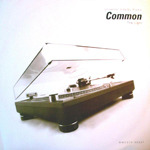 Common: “The Light” (2000)If Jay Dee stuck with a style until he knew he couldn’t improve on it, Like Water for Chocolate marks the end of his first phase as an artist. This album is where Jay started to prove that he could apply his off-beat drum patterns and glowing bass to further ends, whether it was excursions into Afrobeat (“Heat”; the Soulquarians teamup “Time Travelin’ [A Tribute to Fela]”) or simply a more unrestrainedly funky version of his classic approach (“Payback Is a Grandmother”; “Funky for You”).
Common: “The Light” (2000)If Jay Dee stuck with a style until he knew he couldn’t improve on it, Like Water for Chocolate marks the end of his first phase as an artist. This album is where Jay started to prove that he could apply his off-beat drum patterns and glowing bass to further ends, whether it was excursions into Afrobeat (“Heat”; the Soulquarians teamup “Time Travelin’ [A Tribute to Fela]”) or simply a more unrestrainedly funky version of his classic approach (“Payback Is a Grandmother”; “Funky for You”).
But “The Light” is still the quintessential Jay Dee beat of this era-ending phase, partly because it was such a hit— his canny incorporation of Bobby Caldwell’s soul-pop cut “Open Your Eyes” for the chorus helped see to that— and partly because it’s the definitive snapshot of his turn-of-the-decade production style.
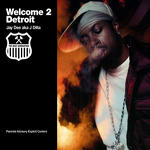 Jay Dee: “B.B.E. (Big Booty Express)” (2001)For a good stretch of the early 2000s, Jay Dee took hip-hop’s post-sampling-era affinity for digital sounds and ran off into the stratosphere with them. While his solo debut Welcome 2 Detroit felt like a more heavy and hardcore yet still characteristic take on his production style, this shift in tone was punctuated by a few stretches of borderline-psychedelic synthesizer work. The most outlandish one was this train-cadenced, Kraftwerk-alluding piece of electro that sounded further out into the future-funk territory of Organized Noize than anything else he’d done before. And while it seemed like an experimental novelty in the context of a catalog that leaned closer to Common’s conscious rap and the neo-soul of Erykah Badu, it was more of a harbinger than it might have seemed at the time.
Jay Dee: “B.B.E. (Big Booty Express)” (2001)For a good stretch of the early 2000s, Jay Dee took hip-hop’s post-sampling-era affinity for digital sounds and ran off into the stratosphere with them. While his solo debut Welcome 2 Detroit felt like a more heavy and hardcore yet still characteristic take on his production style, this shift in tone was punctuated by a few stretches of borderline-psychedelic synthesizer work. The most outlandish one was this train-cadenced, Kraftwerk-alluding piece of electro that sounded further out into the future-funk territory of Organized Noize than anything else he’d done before. And while it seemed like an experimental novelty in the context of a catalog that leaned closer to Common’s conscious rap and the neo-soul of Erykah Badu, it was more of a harbinger than it might have seemed at the time.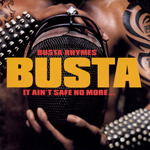 Busta Rhymes: “It Ain’t Safe No More” (2002) [Note: The link is to the instrumental of the track]Maybe Jay was emboldened by hip-hop’s early-00s production trends to go not just bigger and shinier but more out there, and few MCs accommodated that impulse more readily than Busta Rhymes. Jay had already gotten him to spit over Stereolab loops (“Show Me What You Got”) and droning Italian prog (“Genesis”) on his previous two albums, so it might not have been considered a big deal when the title track of Busta’s It Ain’t Safe No More emerged as a towering edifice of gleaming turbocharged rocket-takeoff synthesizers that felt like it was built to fill some sort of floating space cathedral. The unusual thing is that the drum beat itself is martial to the point of minimalism, and even with a flourish-filled melody and some judiciously-placed chimes, this is one of Jay’s least complicated productions. And yet it sounds absolutely gigantic, like a dozen copies are all playing concurrently.
Busta Rhymes: “It Ain’t Safe No More” (2002) [Note: The link is to the instrumental of the track]Maybe Jay was emboldened by hip-hop’s early-00s production trends to go not just bigger and shinier but more out there, and few MCs accommodated that impulse more readily than Busta Rhymes. Jay had already gotten him to spit over Stereolab loops (“Show Me What You Got”) and droning Italian prog (“Genesis”) on his previous two albums, so it might not have been considered a big deal when the title track of Busta’s It Ain’t Safe No More emerged as a towering edifice of gleaming turbocharged rocket-takeoff synthesizers that felt like it was built to fill some sort of floating space cathedral. The unusual thing is that the drum beat itself is martial to the point of minimalism, and even with a flourish-filled melody and some judiciously-placed chimes, this is one of Jay’s least complicated productions. And yet it sounds absolutely gigantic, like a dozen copies are all playing concurrently.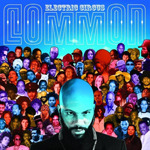 Common: “Soul Power” (2002)One month after “It Ain’t Safe No More”, Jay Dee’s last full-scale major-label production gig turned out to be the most infamous album of his career. Common’s attempt to redefine himself as a genre-hopping practitioner of acid rap on Electric Circus was largely met with bafflement and hostility, and the most adventurous album of James Yancey’s career up to that point wound up becoming branded as one of hip-hop’s most notorious commercial and critical flops.
Common: “Soul Power” (2002)One month after “It Ain’t Safe No More”, Jay Dee’s last full-scale major-label production gig turned out to be the most infamous album of his career. Common’s attempt to redefine himself as a genre-hopping practitioner of acid rap on Electric Circus was largely met with bafflement and hostility, and the most adventurous album of James Yancey’s career up to that point wound up becoming branded as one of hip-hop’s most notorious commercial and critical flops.
Which is a shame, really: some of the more avant-garde moments are noble failures at best, but there’s also tracks like “Soul Power”, a kind of re-envisioning of the Soulquarian style in a post-OutKast context. It plays like inverted, lead-footed disco, yet it kind of swings at the same time; it passes through a rendered thick, radiant cloud of P-Funk, but comes out the other end feeling more minimalist than anything Bernie Worrell ever played on. Trying to figure out how it even got put together is enough to make it sound impressive.
 Jay Dee: “Nothing Like This” (2003)Before cassette culture was a thing, Jay spent the bulk of his Ruff Draft EP hearkening back to the lo-fi character of the tape era— not just as a retreat from the radio and club-friendly demands of a major-label system that left him high and dry, but as an acknowledgement of his early pause-tape technique he developed before R&B keyboardist, occasional collaborator, and fellow Detroiter Amp Fiddler set him up with an MPC. And while “Nothing Like This” wasn’t recorded on an old boombox, it sure sounds like it was: More noise, less cleaning, and fewer sharp edges in the percussion make an already reverb-heavy slab of booming psychedelia (replete with backspun guitar riffs) sound like it emerged from some murky, indica-stained dungeon.
Jay Dee: “Nothing Like This” (2003)Before cassette culture was a thing, Jay spent the bulk of his Ruff Draft EP hearkening back to the lo-fi character of the tape era— not just as a retreat from the radio and club-friendly demands of a major-label system that left him high and dry, but as an acknowledgement of his early pause-tape technique he developed before R&B keyboardist, occasional collaborator, and fellow Detroiter Amp Fiddler set him up with an MPC. And while “Nothing Like This” wasn’t recorded on an old boombox, it sure sounds like it was: More noise, less cleaning, and fewer sharp edges in the percussion make an already reverb-heavy slab of booming psychedelia (replete with backspun guitar riffs) sound like it emerged from some murky, indica-stained dungeon.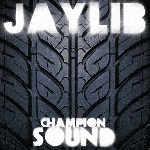 Jaylib: “The Heist” (2003)Dilla was an admirer of Madlib dating back to the first Lootpack record, and what started as a one-off of Madlib rapping over Dilla beats turned into a beat-tape exchange that eventually led to one of hip-hop’s most unique teamups and a friendship based on reciprocal musical development. Jaylib’s Champion Sound was a sort of tag-team producer/MC showcase where they took turns rapping over each others’ beats, and in Dilla’s case it was clear he was subtly integrating some of Madlib’s choppy sample techniques and noisy equalizing into his own style. “The Heist” is one of the grimier Dilla beats on the album, a rickety-sounding dirge where his drunk-sober drums tap morse code against a horror-movie synth pulse that bellows like a broken foghorn.
Jaylib: “The Heist” (2003)Dilla was an admirer of Madlib dating back to the first Lootpack record, and what started as a one-off of Madlib rapping over Dilla beats turned into a beat-tape exchange that eventually led to one of hip-hop’s most unique teamups and a friendship based on reciprocal musical development. Jaylib’s Champion Sound was a sort of tag-team producer/MC showcase where they took turns rapping over each others’ beats, and in Dilla’s case it was clear he was subtly integrating some of Madlib’s choppy sample techniques and noisy equalizing into his own style. “The Heist” is one of the grimier Dilla beats on the album, a rickety-sounding dirge where his drunk-sober drums tap morse code against a horror-movie synth pulse that bellows like a broken foghorn.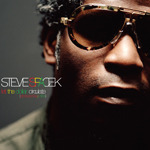 Steve Spacek: “Dollar” (2005)At some point, Dilla’s productions got so busy and dense and unpredictably stitched-together that some artists who had to incorporate them into their own songs must have taken them as some kind of challenge. R&B singer Steve Spacek was one of those artists: He specifically picked this beat out after going through some DATs with Dilla and hearing Billy Paul’s titular chorus from “Let the Dollar Circulate” reduced to a single syllable stretched out into a lilting whirr: yayayayayayayayayay. Throw in an abrupt mid-note opening that hiccups and skips into a jolt of a false start, and you have Dilla at his most in love with the rulebreaking possibilities of loop-based beats.
Steve Spacek: “Dollar” (2005)At some point, Dilla’s productions got so busy and dense and unpredictably stitched-together that some artists who had to incorporate them into their own songs must have taken them as some kind of challenge. R&B singer Steve Spacek was one of those artists: He specifically picked this beat out after going through some DATs with Dilla and hearing Billy Paul’s titular chorus from “Let the Dollar Circulate” reduced to a single syllable stretched out into a lilting whirr: yayayayayayayayayay. Throw in an abrupt mid-note opening that hiccups and skips into a jolt of a false start, and you have Dilla at his most in love with the rulebreaking possibilities of loop-based beats. J Dilla: “Anti-American Graffiti” (2006)And then there’s Donuts. The last album Dilla released during his lifetime is the apotheosis of his final phase as a beatmaker, where his deceptively simple, minimally altered loops jump in unanticipated places, are doubled back, get recut into hidden messages, and fold into themselves in a way that denotes careful precision cleverly disguised as random spontaneity. In toying with and commenting on the basis of familiar hip-hop techniques to throw rhythmic curveballs, Donuts does what James Yancey was always untouchable at: upending the idea of sampling and computer-assembled beats as mere appropriation, leaving his fingerprints all over the surface and coming through with tracks that sound like they were entirely built with human hands.
J Dilla: “Anti-American Graffiti” (2006)And then there’s Donuts. The last album Dilla released during his lifetime is the apotheosis of his final phase as a beatmaker, where his deceptively simple, minimally altered loops jump in unanticipated places, are doubled back, get recut into hidden messages, and fold into themselves in a way that denotes careful precision cleverly disguised as random spontaneity. In toying with and commenting on the basis of familiar hip-hop techniques to throw rhythmic curveballs, Donuts does what James Yancey was always untouchable at: upending the idea of sampling and computer-assembled beats as mere appropriation, leaving his fingerprints all over the surface and coming through with tracks that sound like they were entirely built with human hands.
The Pharcyde on Jay Dee
En idag mycket underskattat grupp


